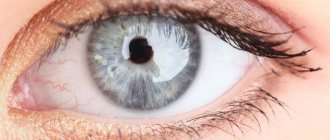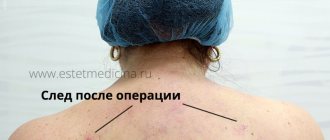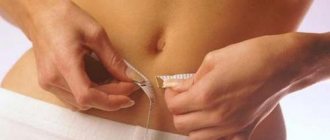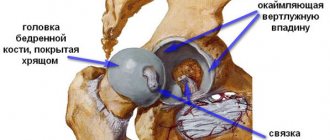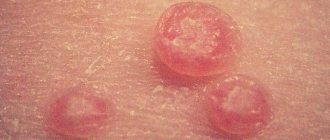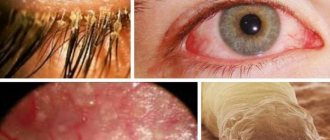We all do not get younger over the years, and the condition of our skin is a direct indicator of the negative impact of the environment and bad habits. A variety of anti-aging procedures come to the rescue, which have recently become increasingly popular among representatives of both sexes. Blepharoplasty with canthopexy is a plastic surgery performed on the periorbital area. This procedure allows you to get rid of drooping eyelids, tighten the corners of the eyes, remove fat bags and other defects that arise with age. As a result, the skin around the eyes takes on a fresh look, the look becomes more open and natural.
Blepharoplasty is a plastic surgery that results in the removal of excess fat deposits and excision of excess skin. Due to manipulation, the patient acquires a new eyelid shape. The canthopexy procedure is aimed at correcting the corners of the eyes, external and internal. Recently, a combination of these procedures has become very popular, as a result of which the muscles and tendons in the eye area are tightened and stabilized, and the periorbital zone is transformed.
Blepharoplasty with canthopexy indications
The periorbital area primarily suffers due to the high sensitivity of the area around the eyes, which also has a thin structure. In addition to age-related changes, the area around the eyes is negatively affected by poor ecology and sunlight. Do not forget about excessive facial expressions; a genetic predisposition is possible. It is in the latter case, more often than with age-related changes, that surgical intervention is necessary, if the patient strives to meet beauty standards.
Blepharoplasty with canthopexy is indicated in the following cases:
- blepharophimosis;
- damage to the conjunctiva of the eye;
- chronic inflammation;
- presence of ptosis;
- unsuccessful blepharoplasty;
- inversion of the lower eyelid;
- eye asymmetry;
- bulging eye syndrome, which is common in cases of myopia;
- need for muscle stabilization and tendon tightening;
- the presence of fatty hernias;
- deformation of the outer eyelid, due to weakened tendons or muscles
Indications
It would seem that plastic surgeries that belong to the field of aesthetic surgery should be performed only according to the wishes of clients. But in fact, there are often medical indications for their implementation.
Canthoplasty is effective in eliminating the following problems:
- pronounced asymmetry of the eyes;
- birth defects;
- inversion of the upper or lower eyelid;
- acquired narrowing of the eyes;
- bulging eyes caused by diseases.
If chronic diseases are the cause of problems, the main emphasis should be on their treatment. Otherwise, the effect of the operation will be very short-lived.
Prohibitions on the operation
In some cases, surgery is strictly contraindicated. Therefore, during the first consultation with a plastic surgeon, you should be extremely frank and inform him about all the characteristics of the body, chronic diseases or diseases suffered the day before. Contraindications to the procedure that are not identified in time can have a detrimental effect on the course and result of the operation and complicate the postoperative period.
Basic prohibitions:
- menstruation;
- cancerous tumors;
- pregnancy and lactation;
- diseases of the cardiovascular system;
- mental disorders;
- endocrine diseases;
- glaucoma;
- problems with blood clotting;
- diabetes mellitus of any type;
- infectious and viral diseases;
- autoimmune pathologies;
- epilepsy;
- severe myopia;
- the presence of inflammatory processes in the body;
- dry eye syndrome.
Types of blepharoplasty
Depending on which area will need to be corrected, blepharoplasty is divided into the following types:
- top;
- lower;
- circular
Canthopexy is usually divided into:
- Medial . During the correction process, they work with the inner corner of the eye, changing its shape. This method is characterized by low trauma.
- Lateral . Used to correct the outer corner of the eye, which is deformed with age. During this correction, you can additionally remove skin creases and get rid of excess dermis and fine wrinkles.
The process of preparing for surgery
During the first consultation with the doctor, all the nuances of the upcoming operation are discussed, and a computer simulation of the desired result is done. The patient will need to undergo tests that will assess his state of health and identify contraindications to plastic surgery. These include blood and urine tests. It is recommended to do a cardiogram and fluorography.
In addition, you need to follow certain recommendations before carrying out:
- quitting smoking, nicotine has the ability to reduce the process of tissue regeneration, significantly extending the rehabilitation period;
- You should not visit the solarium;
- normalize the drinking regime before and after blepharoplasty to speed up healing.
Girls should remove eyelash extensions before surgery and not do cosmetic procedures that affect the area around the eyes on the eve of plastic surgery.
Important! You should not take medications that affect blood clotting. They can cause bleeding during surgery. If you took such medications the day before, be sure to tell your doctor.
A consultation with an ophthalmologist is mandatory, who must check the state of vision and, if necessary, the amount of tear fluid.
If necessary, consultation with related doctors will be required:
- cardiologist;
- neurologist;
- allergist;
- endocrinologist;
- nephrologist
Blepharoplasty
Local and general anesthesia can be used for pain relief. During the operation, the doctor makes an incision along the upper eyelid, at a perfectly measured angle, to avoid the formation of scars after the operation. During the procedure, excess skin and fatty tissue are excised.
The procedure can last from half an hour to two hours, it depends on the complexity of blepharoplasty and the individual characteristics of the patient. After all the manipulations, stitches are applied and sealed with a special plaster. If everything is fine with the patient, after examination by the surgeon, after an hour he can go home, accompanied by someone close to him.
Canthopexy technique
The result of canthopexy should be a beautiful eye, relative symmetry between the lower and upper eyelids, and increased expressiveness of the gaze. To achieve these goals, the surgeon requires extreme precision and certain experience in performing such surgical interventions.
As for the technique of canthopexy, the operation takes place in several successive stages:
- the surgeon applies markings on the face in the eye area, which will guide him during the operation, which improves accuracy;
- then anesthesia is administered, depending on the situation and patient preferences, this can be a local anesthetic or general anesthesia;
- the eyeball is treated with a special plastic shield, which provides protection from accidental damage;
- a small incision is made in the corner of the lateral edge of the eyelid, which reaches the skin folds in the outer corner of the eye;
- through the incision, the surgeon tightens the tendon and fixes it at the periosteum of the orbit; it is possible to excise excess skin;
- the tissue is then sutured with a cosmetic suture using self-absorbable suture material.
Raising the lateral corner of the eye is considered aesthetically attractive and gives the face a youthful appearance.
Go to photo gallery
Blepharoplasty (eyelid surgery) cost of surgery
| Operation name | Cost in rubles |
| Volumetric plastic surgery of the upper eyelids | 150000 |
| Volumetric lower eyelid surgery | 150000 |
| Blepharoplasty of the upper and lower eyelids | 250000 |
| Transconjunctival blepharoplasty of the lower eyelids (author's technique) | 180000 |
| Repeated blepharoplasty of the upper eyelids, correction of complications after eyelid surgery by another surgeon | FROM: 180,000 |
| Repeated lower eyelid blepharoplasty, correction of complications after eyelid surgery by another surgeon | FROM: 180,000 |
See all prices
If, after the information provided, you still have questions, ask us here: question-answer
Make an appointment for a consultation on blepharoplasty with MD, plastic surgeon D.R. Grishkyan. in Moscow here
Rehabilitation after surgery
After surgery under local anesthesia, patients often do not experience symptoms such as headache, loss of space, or dizziness. The most unpleasant consequence, especially for women, is the presence of swelling and bruising. This is quite normal after surgery and will go away soon. For a speedy recovery, the eyes need to be given complete rest. On the fifth day, the stitches are removed.
Rehabilitation after blepharoplasty generally lasts no more than a week. You can evaluate the first results in 14 days, and full results in about 2-3 months. During this period, it is recommended to lead a healthy lifestyle, quit smoking and alcohol. The doctor may prescribe compresses. It is best to sleep on your back and spend less time in the sun.
What is canthopexy and myopexy?
Eye canthopexy is an operation to correct the shape of the eyes. This addition to classic blepharoplasty involves local lifting of the corners of the eyes, based on strengthening the tendons of the lower eyelid. The outer corner of the eye is tightened, and with it the aesthetic condition of the lower eyelid improves, which reduces the volume of tissue cut off and contributes to the formation of a less noticeable scar. As a result, a person simultaneously gets a new attractive eye shape and gets rid of bags under them and wrinkles around them.
Among the indications for which canthopexy can be performed are:
- severe weakness of the lower eyelid (decreased tone), which contributes to drooping of the corners of the eyes;
- habitual ectropion syndrome;
- wide palpebral fissures;
- excessive tearing.
In addition, an important factor is the patient’s desire to change the shape and section of the palpebral fissure.
The operation is performed in a hospital setting, often under local anesthesia and lasts just over 2 hours. At the request of the patient, the doctor can also use general anesthesia. Just a couple of hours in the hospital after the operation is enough, and then, with minor swelling and good health, the surgeon can let you go home. In 5-7 days you will have to come and remove the stitches, which are securely hidden from prying eyes.
Recovery takes up to 10 days. During this time, bruising, swelling and other post-operative symptoms disappear. The seam is very small and hides in the crease of the eyelid. Over time, it generally brightens and becomes the color of the skin.
Myopexy involves additional excision of the overstretched muscle of the lower eyelid, which creates the “Shar Pei eye” effect. Thanks to the additional strengthening of the eyelid muscles, you will get rid of “heavy” eyelids forever; incorrect proportions will be a thing of the past. An operation to strengthen the lower eyelid will allow you to achieve the desired rejuvenation result in combination with other types of aesthetic operations: cheek lift, temples, forehead.
Complications after blepharoplasty
If you did everything correctly: you chose a good, qualified surgeon who practices in a clinic where there is all the equipment necessary for a high-quality operation; follow his recommendations before and after surgery - success is practically in your pocket. A small share of the risk falls on the individual characteristics of the body, because surgical intervention is not always predictable.
Sometimes the following complications may occur:
- tearfulness;
- cyanosis;
- increased swelling;
- infection, conjunctivitis;
- scars that do not disappear over time
Such complications are not always a consequence of medical error. Such a reaction may occur as a result of non-compliance with recommendations during the rehabilitation period; it may be the body’s response to stress received during the intervention.
Lower blepharoplasty with canthopexy reviews
Alina, 41 years old
Few people understand us, people with bags under our eyes. Basically, they advise drinking less liquid at night and applying compresses. But I have had this problem for a long time, since my youth, and nothing helps. If earlier the option had been to get rid of them, I would have already done it. I had blepharoplasty done in one of the clinics my friend tested. I was offered to have the operation together with canthoplasty, because with age the muscles on the face become weaker and there is a possibility that after blepharoplasty the eyelid will not fit tightly to the eye. I agreed and did not regret it. The result was not immediate, but excellent. The only thing I regretted was that I did it under local anesthesia; I experienced real stress.
The key to a good result when performing plastic surgery on the eyelids is an accurate knowledge of the anatomy of the eyelids. The eyelids and periorbital region are a single anatomical complex, consisting of many anatomical structures that undergo changes during surgical manipulation, and all new and most effective methods of eyelid surgery have a clear anatomical justification and allow obtaining the best possible aesthetic and functional results.1 - Upper eyelid fold, 2 - Upper eyelid groove, 3 - Internal canthus, 4 - Nasolacrimal groove, 5 - Eyelid-cheek division, 6 - Lower eyelid fold, 7 - Horizontal axis of the eye, 8 - Lateral canthus, 9 - Upper eyelid
The skin of the eyelids is the thinnest on the body. The thickness of the eyelid skin is less than a millimeter. This thin skin heals better than skin on any other part of the body because it has a very good blood supply, so the scar after a properly performed blepharoplasty is usually almost impossible to see.
Unlike other anatomical areas where fatty tissue lies under the skin, just under the skin of the eyelids lies the flat orbicularis oculi muscle, which is conventionally divided into three parts: internal, median and external. The internal part of the orbicularis oculi muscle is located above the cartilaginous plates of the upper and lower eyelids, the middle part is above the intraorbital fat, the external part is located above the bones of the orbit and is woven above into the muscles of the forehead, and below into the superficial musculofascial system of the face (SMAS). The orbicularis oculi muscle protects the eyeball, performs blinking, and functions as a “tear pump.”
1 - Frontalis muscle, 2 - External part of the orbicularis oculi muscle, 3 - Median part of the orbicularis oculi muscle, 4 - Internal orbicularis oculi muscle, 5 - Internal canthus, 6 - Nasalis muscle, 7 - Levator labii superioris muscle, 8 - Levator superioris muscle lip, 9 - Depressor nasal septum muscle, 10 - Zygomatic major muscle, 11 - Zygomatic minor muscle, 12 - Infraorbital nerve, 13 - External canthus
The musculoskeletal system of the eyelids performs a supporting function and is represented by thin strips of cartilage - tarsal plates, lateral canthal tendons and numerous additional ligaments. The superior tarsal plate is located on the lower edge of the upper eyelid under the orbicularis oculi muscle, and is usually 30 mm in length and 10 mm in width, it is firmly connected to the inner part of the orbicularis oculi muscle, the aponeurosis of the levator superioris palpebral muscle, Müller's muscle and the conjunctiva. The inferior tarsal plate is located on the upper edge of the lower eyelid, is usually 28 mm long and 4 mm wide, and is attached to the orbicularis muscle, capsulopalpebral fascia and conjunctiva. The lateral canthal tendons are located under the orbicularis oculi muscle and are firmly connected to it. They connect the tarsal plates to the bony edges of the orbit.
1 - Müller's muscle, 2 - Internal canthus, 3 - Internal canthus, 4 - Lacrimal sac, 5 - Ligaments, 6 - Inferior tarsal muscle, 7 - Lockwood's ligament, 8 - External canthus
Under the orbicularis muscle also lies the orbital septum - a thin but very strong membrane; one edge is woven into the periosteum of the bones surrounding the eyeball, and the other edge is woven into the skin of the eyelids. The orbital septum retains the intraorbital fat within the orbit.
1 - Orbital septum, 2 - Medial palpebral artery, 3 - Internal canthus, 4 - Internal oblique muscle, 5 - Intraorbital fat - central portion, 6 - Ligaments, 7 - Intraorbital fat - external portion, 8 - External canthus, 9 - Lacrimal gland
Under the orbital septum there is intraorbital fat, which acts as a shock absorber and surrounds the eyeball on all sides. Portions of the upper and lower intraorbital fat are divided into internal, central and external. Next to the upper outer portion is the lacrimal gland.
1 - Intraorbital fat - central portion, 2 - Dividing septum, 3 - Intraorbital fat - internal portion, 4 - Internal canthus, 5 - Intraorbital fat - internal portion, 6 - Inferior oblique muscle, 7 - Intraorbital fat - central portion, 8 - Ligaments, 9 - Intraorbital fat - external portion, 10 - External canthus, 11 - Intraorbital fat - external portion, 12 - Lacrimal gland
The muscle that lifts the upper eyelid opens the eye and is located in the upper eyelid under the cushion of fat. This muscle is attached to the superior tarsal cartilage. The skin of the upper eyelid is usually attached to the levator palpebrae superioris muscle. At the site of attachment of the skin to this muscle, when the eye is open, a fold forms on the upper eyelid. This supraorbital fold varies greatly from person to person. In people from Asia, for example, it is weakly expressed or not at all; in Europeans, it is well expressed.
1 - Muller's muscle, 2 - Levator superioris muscle, 3 - Superior rectus muscle, 4 - Inferior rectus muscle, 5 - Inferior oblique muscle, 6 - Orbital bones, 7 - Orbital rim, 8 - SOOF - infraorbital fat, 9 - Orbital ligament, 10 - Orbital septum, 11 - Intraorbital fat, 12 - Capsulopalpebral fascia, 13 - Inferior pretarsal muscle, 14 - Inferior tarsal plate, 15 - Superior pretarsal muscle, 16 - Superior tarsal plate, 17 - Conjunctiva, 18 - Ligaments, 19 — Muscle that lifts the upper eyelid, 20 — Orbital septum, 21 — Intraorbital fat, 22 — Eyebrow, 23 — Eyebrow fat, 24 — Orbital bones
Behind these structures is the eyeball itself, which is supplied and innervated through the posterior part of the orbit. The muscles that move the eye are attached at one end to the eyeball and lie on its surface, and at the other end they are attached to the bones of the orbit. The nerves that control the muscles are small branches of the facial nerve and enter the orbicularis oculi muscle on all sides from its outer edges.
The anatomical structures of the lower eyelid and midface are closely related, and changes in the anatomy of the midface affect the appearance of the lower eyelid. In addition to portions of periorbital fat, two additional layers of fatty tissue exist in the midface.
1 - Intraorbital fat, 2 - SOOF - infraorbital fat, 3 - Malar fat
Beneath the outer part of the orbicularis oculi muscle lies the infraorbital fat (SOOF). The greatest thickness of SOOF is on the outside and sides. The SOOF is deep to the superficial musculoaponeurotic system of the face (SMAS) and envelops the zygomatic major and minor muscles. In addition to SOOF, malar fat pad is an accumulation of fat in the form of a triangle or so-called. “painting” fat is located under the skin, above the SMAS. Aging of the midface is often accompanied by sagging of the malar fatty tissue, which results in noticeable zygomatic or so-called “painting” bags on the face.
1 - Orbital septum, 2 - Orbital ligament, 3 - SOOF - infraorbital fat, 4 - Zygomatic ligament, 5 - Prezygomatic space, 6 - Zygomatic major muscle, 7 - Subzygomatic space
The main supporting structure of the midface is the orbitozygomatic ligament, which runs from the bones almost along the edge of the orbit to the skin. It contributes to the formation of the zygomatic “painting” bag and the eyelid-cheek separation visible with age.
1 — Fatty “hernia”, 2 — Painter’s “bag”, 3 — Nasolacrimal groove
Only registered users can leave comments!

